The Puerto Rican Island the US Military Destroyed Has Been Forgotten After Hurricane Maria
Credit to Author: Sarah Emerson| Date: Fri, 20 Oct 2017 16:00:00 +0000
Vieques, a small and vibrant Puerto Rican island, was once described to me like this: “Puerto Rico is a colony of the United States,” I was told. “Vieques is a colony of Puerto Rico.”
Technically, Vieques is a municipality, or locally governed unit of Puerto Rico. The scenic island, with its white beaches and aquamarine waters, is situated eight miles off the mainland. Tourists know Vieques for its “biobay,” a stretch of coastline that glows with microscopic plankton each night. The island’s national wildlife refuge, which is home to 190 bird species, was visited by 70,000 people last year; a testament to its natural beauty.
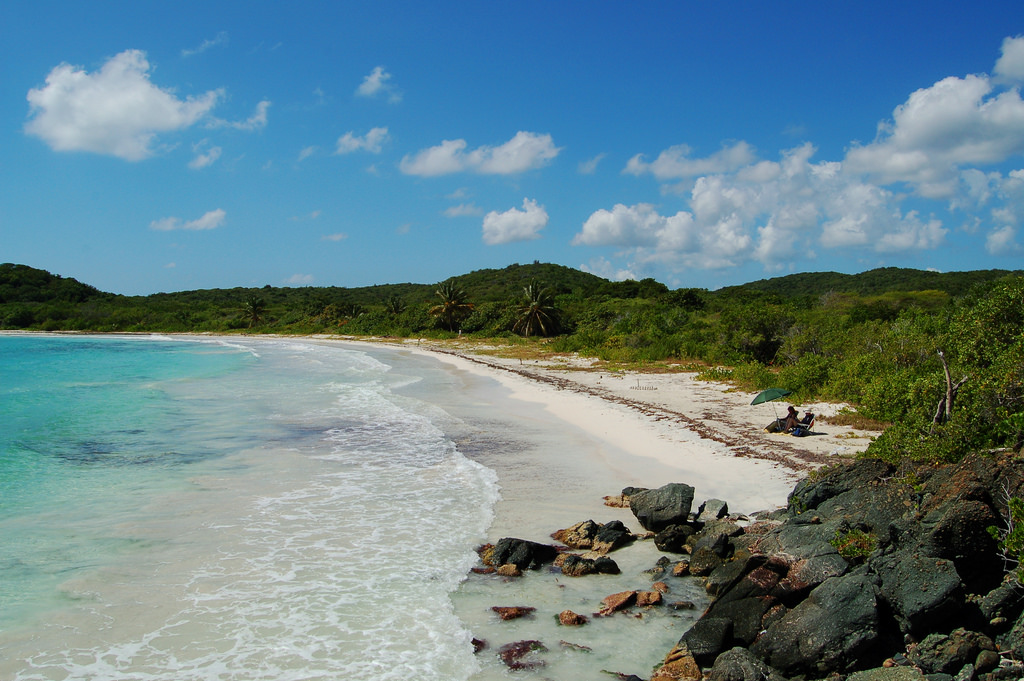
But Vieques harbors another, toxic history; one that chronicles a struggle for Puerto Ricans’ civil rights amid environmental exploitation. And now, after Hurricane Maria, the island is once again fighting to be heard.
“The damage they have caused to Vieques is irreparable. We deserve to, at least, work toward the development of our island: building schools, better roads, equipment, and medicine for our hospital, and to have dialysis and maternity services,” Vicente Rosario, who was born and raised on Vieques, and has family there, told me.
*
Beyond the tourist hub of Esperanza, a colorful beach town, lies a Superfund site, one of the nation’s most contaminated, unhealthy waste areas. Since the 1980s, a federal government program has regulated the cleanup of these toxic sites across the US, which pose a threat to human and environmental health. This one ostensibly quarantines “extensive amounts” of unexploded bombs left over by the United States Navy, which controlled much of the island during the 20th century.
In 2005, the site was placed on the National Priorities List, warranting further investigation, by the Environmental Protection Agency (EPA), which co-manages the site with the Navy and United States Fish and Wildlife Service (USFWS).
When Hurricane Maria ripped through Puerto Rico, I tried to learn what, if anything, had happened to Vieques’ Superfund site. The EPA had just been criticized for its handling of Superfund site assessment after Hurricane Harvey in Texas, and I was eager to know how Puerto Rico—a territory that President Trump wrongly accused of wanting “everything to be done for them”—was faring in comparison.
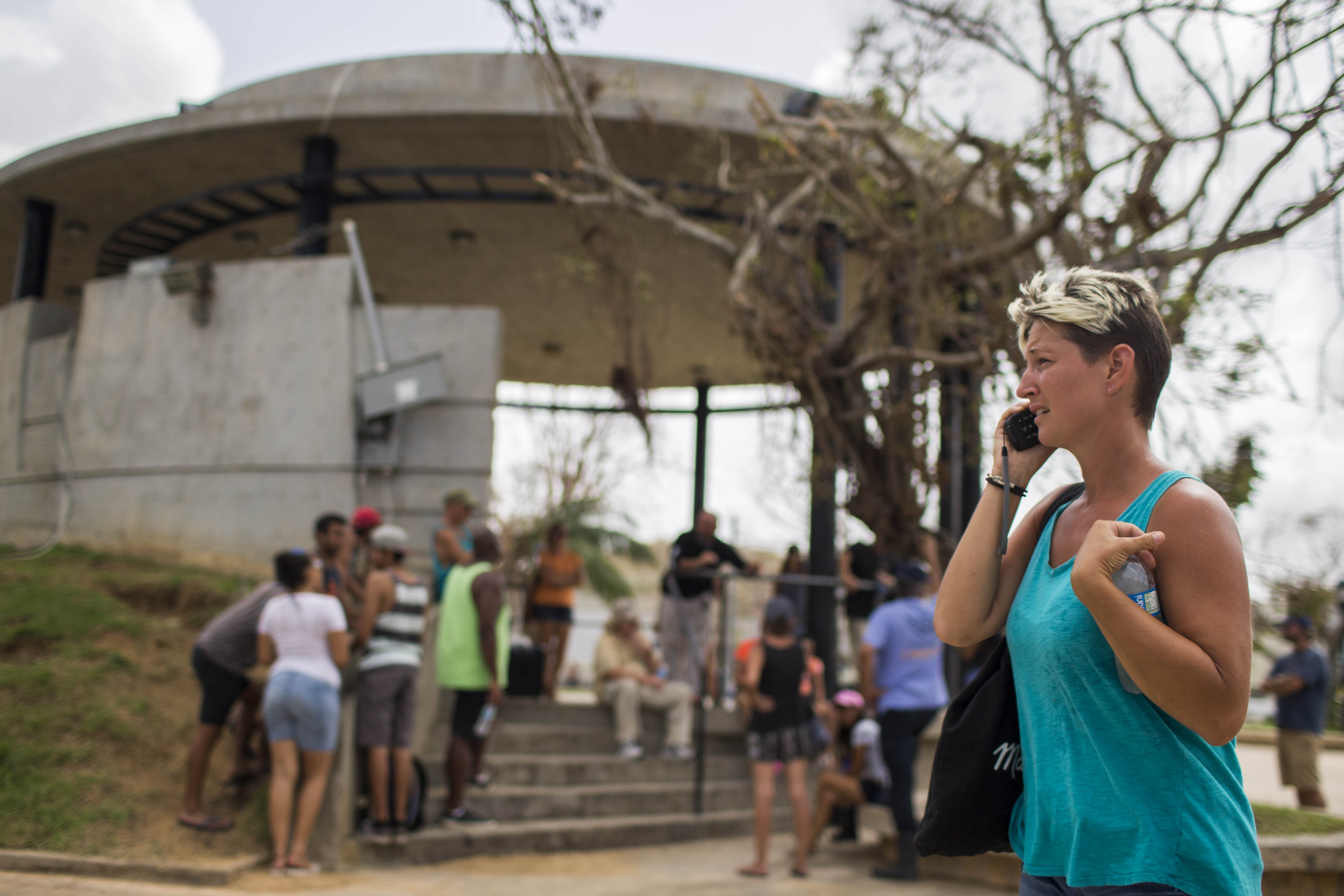
I contacted the EPA first. At the time, it claimed to have inspected several Superfund sites on Puerto Rico, but Vieques wasn’t among them. I repeatedly called and emailed multiple people, at EPA Headquarters, EPA Region 2—which oversees Puerto Rico—and the Region 2 laboratory about Vieques.
Roughly 10,000 people live on Vieques. Like the rest of Puerto Rico, the island had no power, no cellphone signal, and limited water immediately after the storm. Federal aid has been fatally slow to arrive, hindered by damaged ports, making the island wonder if it’s been forgotten. All the while, Vieques’ oldest and sickest residents are dying. The island needs more of everything.
“Little aid is being distributed. When we get it, [aid consists of] a case of water, random food, MREs [read-to-eat meals] or Chef Boyardee if you are lucky. Pop Tarts, a peach cup, crackers,” Mario Schiavone, a resident of Monte Santo in Vieques, told me over text message on Wednesday.
Schiavone, who moved to Vieques in 2015 with his partner, Richard Buchanan, believes that FEMA is no longer present on the island. The National Guard’s ad-hoc “command center” in the mayor’s office, he said, has been closed.
“My family, neighbors and friends are alive, but they are not okay,” Rosario echoed. “I spoke to my brother-in-law [in early October] and he told me there was no aid being distributed yet. No FEMA had contacted or visited him. There is no plan and only family, friends, and neighbors are supporting and taking care of each other. They cook together, they share the little they have.”
*
After several days of hearing nothing, a spokesperson for EPA Region 2 told me the following:
The EPA has spoken with NAVFAC [Naval Facilities Engineering Command] Atlantic about the Atlantic Fleet Weapons Training Area site on Vieques, PR. The Navy, which is the lead agency for the cleanup of the site, plans to begin assessing the site when they have the appropriate personnel available to ensure safety.
We also note that the site is a National Wildlife Refuge and the USFWS closed the refuge in the aftermath of Irma. The refuge remains closed and an advisory has been posted on their Facebook page. The Navy has advised FWS to let Navy ordnance technicians examine beaches and roads before FWS personnel go out to assess the refuge.
EPA also confirmed that it has no one actively inspecting the site, as the area is too unsafe. The agency’s Caribbean Environmental Protection Division has a Superfund team member on Vieques who has been communicating with Navy personnel over satellite phone.
I had other questions, too, like whether munitions could’ve been disturbed by the hurricane. I was told to ask the Navy about them.
“EPA has the important role of overseeing the Navy’s remediation of the site,” Judith Enck, former Regional Administrator of EPA Region 2, told me.
“There are thousands if not millions of bullets, bombs, projectiles and other unexploded ordnance scattered all over the land and in the water. EPA needs to independently inspect the site to determine if more unexploded ordnance went into the water and expedite the remediation of [the site and its surroundings],” she added.
A Navy spokesperson confirmed that it has begun to assess Vieques, but wouldn’t say how much of the Superfund site it had inspected. As of Tuesday, no munitions “or any other contaminations” had been found. Due to intense flooding, which hampered operations, an inspection of Vieques’ beaches will take another two weeks [from that day] to complete.
Camp Garcia, on the eastern tip of Vieques, sustained structural damage to various buildings. “In order to go down range several safety measures must be in place such as medical support and logistics to transport someone if they were to be injured,” they added.
*
The Navy began acquiring land on Vieques during the early 20th century. According to the federal government, Vieques was a strategic Navy installation, underscoring its presence between North America and the valuable Panama Canal. To Puerto Ricans, however, this was an occupation. By 1941, the Navy was expropriating territory, and soon controlled more than 70 percent of the island, or 22,000 acres. Local Viequenses recall the eviction notices, and the military threatening to bulldoze their homes if they didn’t leave.
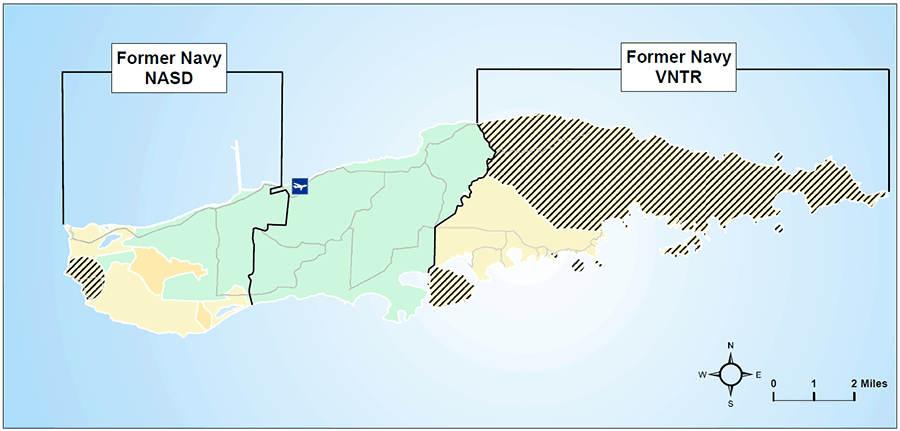
Between 1940 and 2003, the Navy tested all manner of weapons on the eastern part of island, within a 900-acre Live Impact Area. Napalm, depleted uranium, TNT, and heavy metals were deployed in training exercises. In 1998 alone, 23,000 bombs were dropped on Vieques.
Camp Garcia was once a testing site for biological weapons. Former military staff who worked there say that experiments, such as exposing animals to airborne chemicals, made them chronically ill. (Cancer rates in Vieques are 27 percent higher than in mainland Puerto Rico, according to a 1999 study by the country’s former health minister.)
Currently, the EPA has identified “mercury, lead, copper, magnesium, lithium, perchlorate, TNT, napalm, depleted uranium, PCBs, solvents, and pesticides” which may be present at the site, but “have not been fully characterized.”
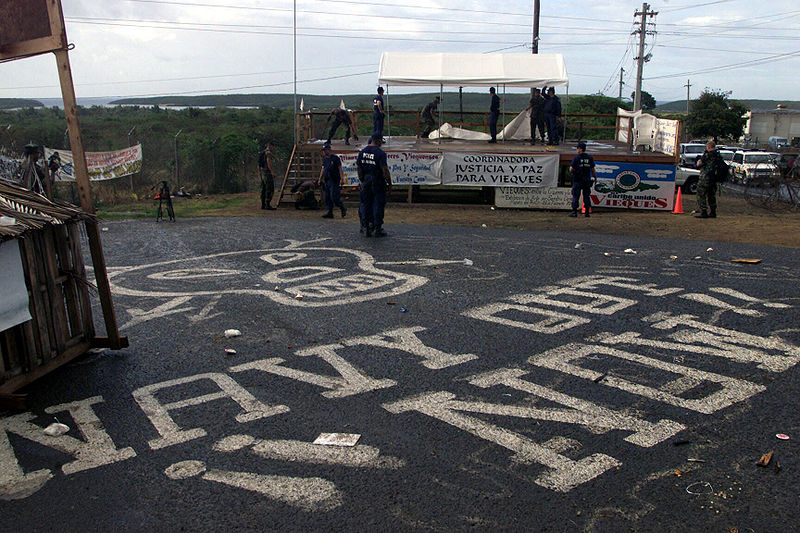
On May 1, 2003, the Navy closed its base on Vieques. But only after the death of David Sanes Rodriguez, a civilian security guard who was killed when a Marine F-18 fighter jet accidentally targeted his observation post in 1999. The Navy continued to bomb Vieques after that, catalyzing a wave of protests and civil disobedience. When the Navy withdrew, it left the people of Vieques with a legacy of environmental carnage.
“We have beautiful beaches we can only look at from a boat in the water because if we step on them, we just might explode,” Rosario said.
*
Previous efforts to involve Viequenses in Superfund site decisionmaking were “problematic from beginning,” said Natasha Bannan, an associate counsel at the civil rights organization LatinoJustice.
Community meetings, at one point, were only held in English, Bannan said, where the Navy would provide “highly technical information that no one who wasn’t military personnel would understand.” Controversial cleanup practices, like the open-air burning of vegetation to find cluster bombs, were opposed by residents, and deepened their mistrust of the federal government. Much of the Superfund site exists within a national wildlife refuge.
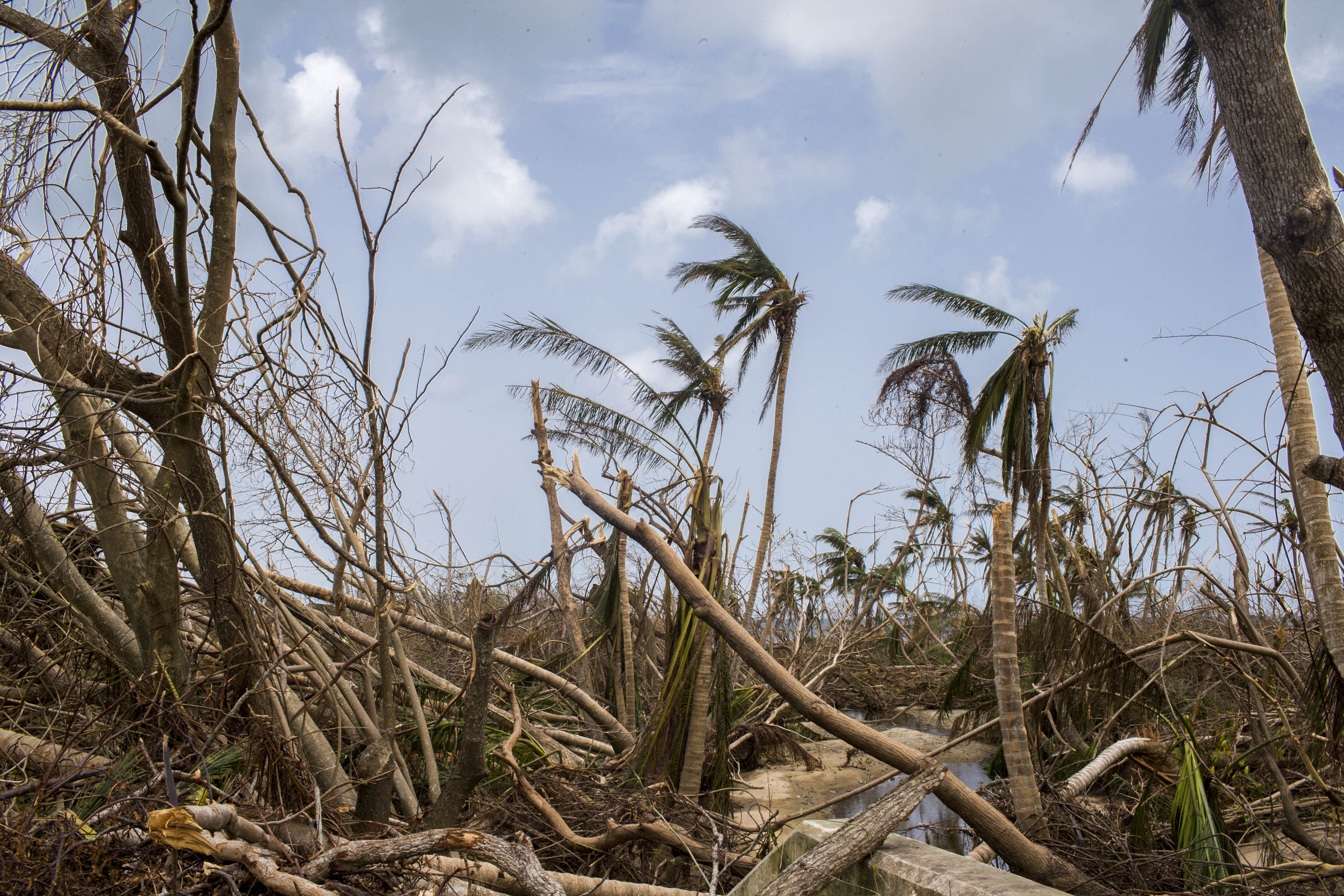
“They are cleaning superficially and in open air. We have protested these acts many times and they are still going on,” Rosario said. “We are always worried about what is happening in there. [USFWS] has taken over the land that the Navy used for its war games, and they have done nothing to promote our development as a community that wants to grow.”
I asked the EPA, Navy, and USFWS if they had been communicating with locals about the Superfund site in the aftermath of Hurricane Maria.
A Navy spokesperson said its contractors who live on Vieques—there are 50 of them—have been “talking to neighbors” and “engaging with the local population” about the site.
But the Vieques residents I spoke to say they haven’t received news, official or otherwise, about the Superfund site.
“No info from the Navy or EPA on ‘the reserve’—it is closed. We do not even know if the water is usable when we have running water,” Schiavone told me. “There is no Navy. Not at all.”
*
The immediate needs of Vieques are urgent and many.
Like the rest of Puerto Rico, potable water is a priority, along with power and fuel for hospitals and generators. In order to get cellular service, people like Schiavone have been trekking to higher ground—in his case, the top of a nearby fort. Lines for water, ice, and fuel, which now costs $25 for seven gallons in Monte Santo, are seemingly endless. In the midst of a nearly country-wide communications blackout, residents are also desperate for reliable outside information.
But in the long-term, Vieques faces other challenges. We don’t know whether Hurricane Maria has widened the toxic footprint of its Superfund site. And President Trump’s proposed EPA budget would cut funding for the Superfund program by 25 percent. “Currently, people in Vieques are struggling to survive,” Enck said. “That needs to be a priority.” It will takes weeks, if not months, to fully assess the potential damages.
“We don’t ask for much,” Rosario said. “We ask for respect and compassion towards the people of Vieques who have endured many obstacles that prevent us from moving forward.”